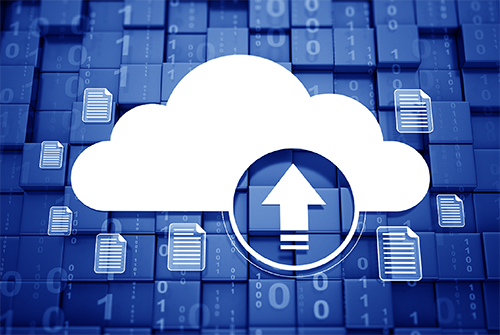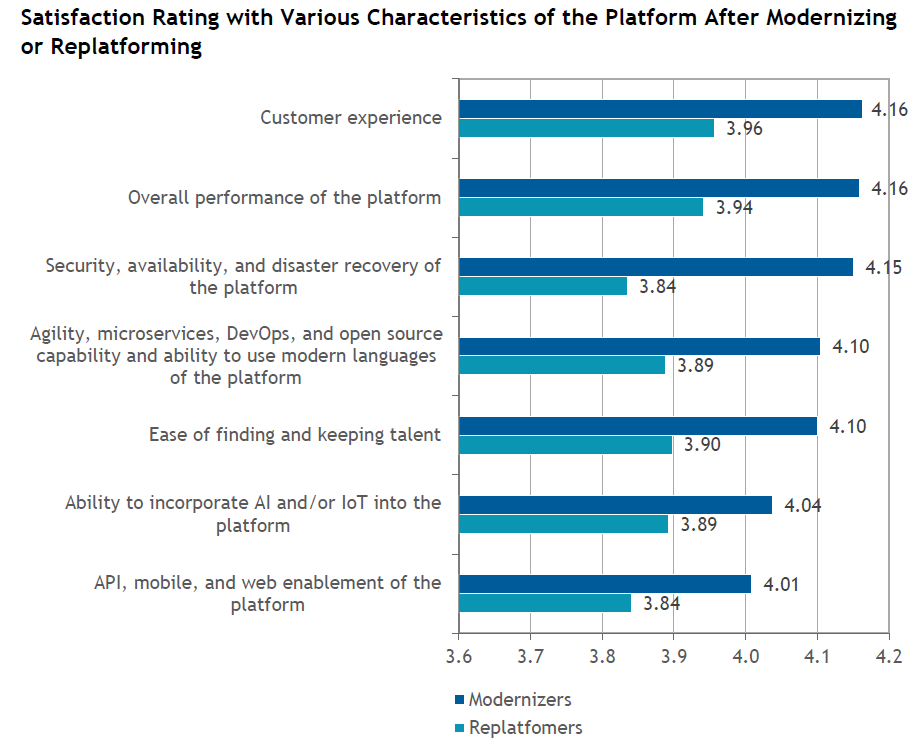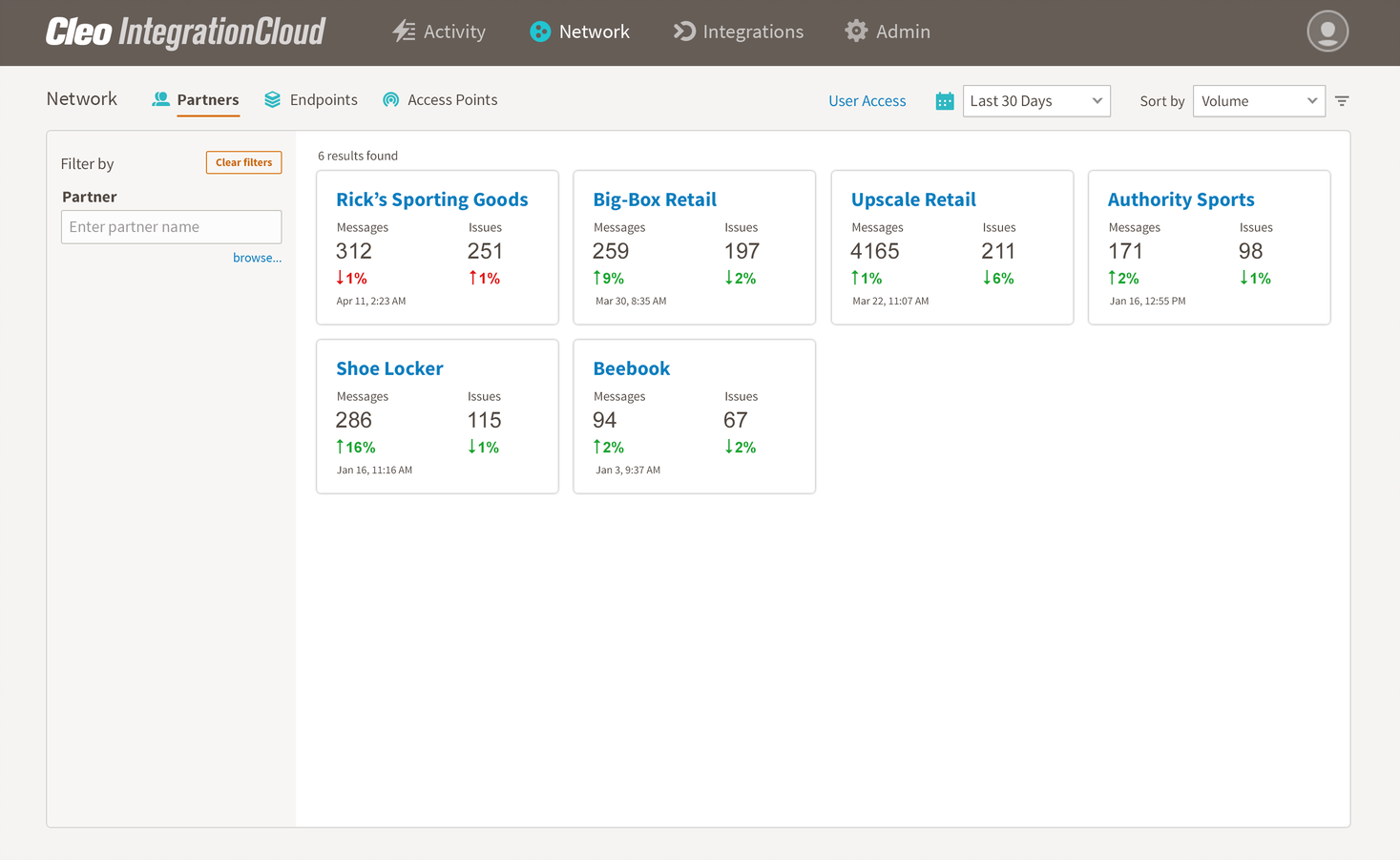Five Reasons IBM iSeries Shops Should Embrace Hybrid Integration Environments for EDI

We hear it all the time: "We are an IBM iSeries IT shop." We get it. The iSeries is robust, super powerful, and over the years you have likely made significant investments into the platform. And let's not forget the skills you (and your team) have acquired over time. Moving off the iSeries, or even migrating certain applications, feels like a monumental effort.
When speaking with a client a few months back, I suggested he migrate his company's integration platform off the iSeries. His shocked response was, "Why on earth would you even suggest we do anything like that?"
However, that is a very short-sided perspective. The world is changing -- fast. Today your business needs agility and your stakeholders demand improved efficiency from your IT teams. Here is why you need to reconsider your "all-in" iSeries strategy:
Organizations that embark on modernizing their iSeries environment have seen higher customer satisfaction, reduced security risks, increased agility, and higher employee retention.
This statement is based on the findings by IDC and recently published in "The Quantified Business Benefits of Modernizing IBM Z and IBM I to Spur Innovation" whitepaper.
According to their study of 440 organizations, those who modernized their IBM iSeries and System Z applications received far greater business benefits than those who did not.
What's even more interesting is this was not about an "all-in" migration, as some would have guessed. Many out there consider the iSeries as legacy technology. While there may be some truth to that, the benefits seen by the iSeries shops that IDC studied were not from migration at all; rather, these benefits resulted from a modernization effort -- with the iSeries staying in place.
While "modernization" can be open to interpretation, the results are not. Modernizing your iSeries results in business benefits. Period.
Besides the benefits listed above, organizations who modernize are better able to embrace new technology initiatives such as the Internet of Things, artificial intelligence, data analytics, web enablement, microservices, APIs, and more. This is super critical since one of the biggest takeaways from our recent Cleo Connect event showed that API-based integrations are one of the biggest areas of interest among supply chain organizations.
More important, beyond simply accommodating today's new technologies, the true benefits of modernization are the many tangible business outcomes that result from improved processes across multiple lines of business.
The chart below lists some of the benefits companies stand to gain after modernizing:

Source: "The Quantified Business Benefits of Modernizing IBM Z and IBM I to Spur Innovation" - IDC
From delivering a better customer experience and gaining a higher level of security, to overall smoother platform performance, companies who modernize their iSeries drive better, more, impactful business outcomes than they ever possibly could while remaining on an outdated legacy environment alone.
But the very idea of modernizing your iSeries environment can be daunting.
Where do you start?
One key way organizations can begin their iSeries modernization initiative and reap the benefits highlighted above is by building out a hybrid cloud environment, which enables, among other things, moving EDI to the cloud with ease.
According to IT Jungle, 76% of the applications running on the IBM iSeries in 2021 were home-grown applications, which was up from 73% in 2020 and 64% in 2019. This signals that more commercial-off-the-shelf (COTS) software is migrating off the iSeries, presumably into the cloud to create hybrid environments.
Given this trend, one of the most beneficial "modernizing" moves an iSeries organization can make is migrating their integration processes (typically EDI and more recently API-based) to the cloud, because cloud-based integration platforms deliver improved capabilities over on-premise EDI solutions on the iSeries.
Top 5 Hybrid Integration Benefits
Embracing a hybrid integration environment has several benefits, here are the top five:
1. Reducing Reliance on iSeries Talent
Finding talent with proficiency in iSeries skills (specifically RPG) can often be a challenge. In fact, according to another article published by IT Jungle in February 2021, 46% of survey respondents listed skills shortage as one of their top concerns.
By embracing a hybrid EDI cloud solution, you won't have to worry about finding iSeries talent or expertise to maintain your critical B2B integrations because modern platforms empower virtually every role to create and maintain EDI workflows.
Modern EDI platforms have agent capabilities to interface with your iSeries applications, specifically system of record (SOR) applications like an ERP or CRM that natively run on the platform. IT Teams who modernize their technology stack by moving integration to the cloud can significantly reduce the reliance on iSeries skills for their critical B2B integrations.

Modern integration platforms empower business and technical roles to create, deploy, and manage critical EDI and API-based integrations.
Often, companies turn to consultants or 3rd party organizations for their iSeries projects. These can be expensive, lack flexibility, and often slow down your business. By empowering more users across the organization to manage and run integrations, you will have less dependency on iSeries skillsets whether those are internal or external resources.
2. Better User Experience
One of the first things you'll notice is just how improved the overall user experience is when you move certain applications off of the iSeries. This is definitely true for an integration plan, as users will typically gain better visibility, a smoother user interface, as well as ease of automation and orchestration for any business process or transaction.
Solutions like Cleo Integration Cloud, provide an intuitive experience to allow for proactive issue resolution and centralized exception management visibility. This provides more predictable business outcomes, better trading partner relationships, and a better experience for all stakeholders.
 Migrating integration software to the cloud from the iSeries improves efficiency, saves time, and enhances control over your B2B integrations. Left, we see an EDI transaction on the Series, and on the right, a similar transaction in Cleo Integration Cloud.
Migrating integration software to the cloud from the iSeries improves efficiency, saves time, and enhances control over your B2B integrations. Left, we see an EDI transaction on the Series, and on the right, a similar transaction in Cleo Integration Cloud.
3. Supporting More Protocols = Supporting Your Business
If you are a growing organization, you will have to support new business requirements coming from your ecosystem entities, typically in the form of data formats and protocols. The good news is modern integration platforms support more protocols, as well as additional integration use cases, such as API-based integration with eCommerce or Marketplaces. Even when looking at more traditional B2B protocols, maybe you need to support not just AS2, but also FTP, SFTP, REST, Partner Mailboxes, email, and much more.
Having more protocol support allows companies to manage the different needs of the business, whether that means handling a new requirement from an internal stakeholder, or an outside mandate from customers. Protocol support is important because without it companies are putting themselves in a position to let their stakeholders down, be they customers, partners, shippers, or fellow employees ultimately affecting revenue-critical business relationships.
Often organizations are unable to grow because their integration environment couldn't support incoming transactions in new or modern ways. In fact, in a recent survey, 74% of companies claimed to have lost more revenue in 2020 than the year before due to integration issues alone.
In a hasty effort to keep things running, sometimes companies make short-term decisions, and too often this includes a piece-meal approach to integration especially when revenue is on the line. The most common nearsighted move organizations make is purchasing a one-off tool for one specific use case, only to quickly realize the problem has worsened. Now instead of solving their problem they just have more solutions to manage, or obscure skillsets to maintain, and it's almost inevitable that end-to-end visibility gets compromised between managing different systems.
4. Reducing Your Overall Business Risk
There are several business risks when going "all-in" on the iSeries. We discussed the talent shortages above and the lack of capabilities with native applications as well. But what about security?
According to this article from IT Jungle, 75% of iSeries organizations reported security as their top IT concern. Another way of looking at it is that 3 out of every 4 organizations running the iSeries are concerned about the lack of security on the platform or their ability to secure the iSeries. We have all seen an uptick in malware targeting the logistics and transportation industries as of late. Part of this is the hacking community attacking on-premise environments where they believe they will have easier access to corporate systems.
A hybrid cloud environment provides a much more secure environment for your organization, potentially eliminating security risks, and at a minimum reducing them. Having your integration in the cloud ensures that your critical B2B transactions are not compromised in the event your internal, on-premise environment is breached. Because let's face it, it is not "if" that will happen, but more "when." Cloud-based EDI solutions maintain high system availability (oftentimes in four 9's of reliability), along with a proven disaster recovery plan. This level of redundancy and security can alleviate some of your security concerns about the iSeries.
5. Improving the Customer Experience
The biggest growth lever one has in their business is customer experience. History (and data) have shown that superb customer experiences result in loyal customers, premium prices, and a reduction in the cost of sales over the long haul. We have all seen the stats, but the most interesting one as of late was a Walker study where their research found 86% of buyers are willing to pay more for a great customer experience. While this is not new information, the good news is that there are some specific ways cloud-based integration can support any organization's quest for the optimal customer experience.
The key is to empower your customer-facing teams, such as customer service reps or sales, with real-time visibility. Modern integration platforms give these team members a completely web-based experience with partner scorecards, end-to-end visibility, and detailed transaction reports to exceed all customer satisfaction goals.

With a modern integration platform like Cleo Integration Cloud, your team can proactively monitor your most strategic partners and their associated transactions through intuitive dashboards with drill-down capabilities.
Your team members can also publish or share dashboards with external partners and internal stakeholders, to facilitate engagement, escalate cases, or simply communicate status all activities that lead to improved customer experiences.
By putting the power of visibility into the hands of your teams, they can act with agility and ensure your customer relationships stay healthy and vibrant.
Specifically, visibility can allow these team members to directly answer questions from your ecosystem partners, proactively monitor key trends in the business or at an individual partner level, and help eliminate any communication breakdowns between the customer and your organization by reducing time to resolution on errors.
Don't Get Stuck in with an Outdated Mindset
Contrary to what many vendors out there say, you don't have to completely migrate off of your iSeries to gain the benefits of the modern cloud. But why not have the best of both worlds? There's no reason why you can't maintain your iSeries environment on-premise but slowly modernize your approach with a hybrid cloud environment, starting with your integration platform.
Data shows "modernizers" have improved business outcomes over "migrators." So it is in your organization's best interest to explore the potential options.
While the iSeries is a powerful platform (and will remain so), it does come with some disadvantages. So now is the time to exploit these and deliver improved business outcomes to your stakeholders and customers.
The formula is simple: Keep the iSeries for custom applications + invest in your system of record on the iSeries + modernize your architecture by moving EDI and integration to the cloud = improved business outcomes and lower business risk.
Think about it. It could be the difference between surviving and thriving.

About Cleo
